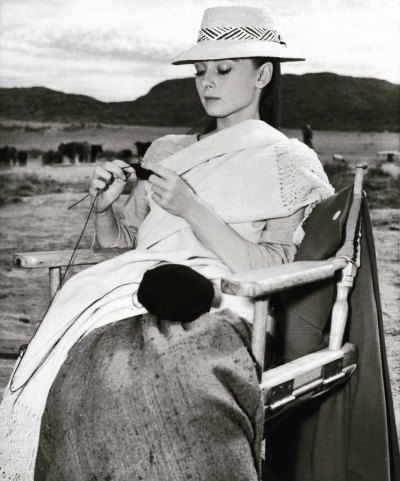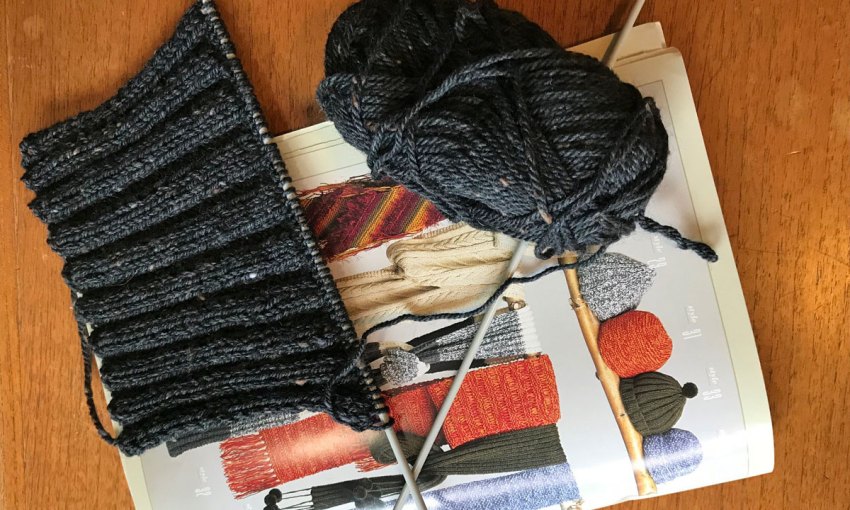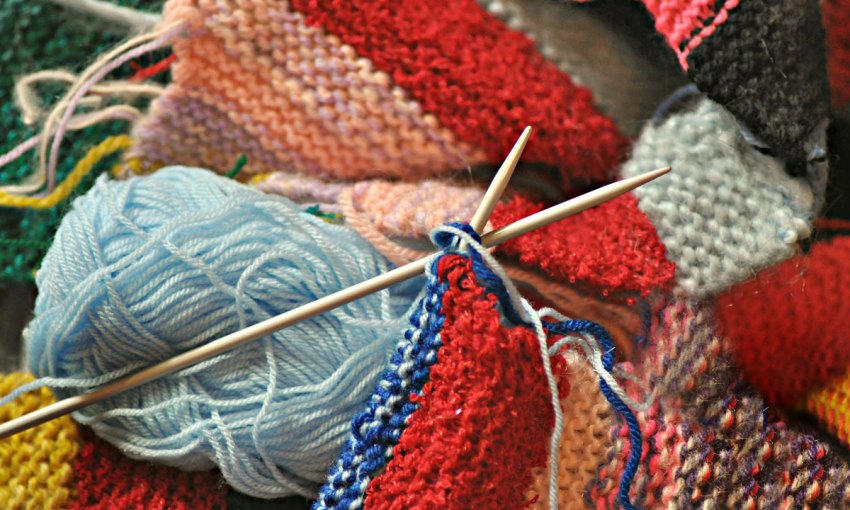Self-isolation boredom has inspired renewed interest in the art of craft – but there are dangers in getting too crafty too quickly. Suzie Keen shares some purls of wisdom from her own attempts to master the knack of knitting.
Zen and the art of knit one, purl one
I’m not a complete newbie when it comes to knitting, but one of the last woolly endeavours I can recall was a cardigan for my baby nephew – a labour of love knitted on teeny-tiny needles with superfine snow-white and powder-blue wool.
It was the source of great pride for my teenage self, but he outgrew it. In fact, he’s now in his 30s and six-foot-something, so it’s fair to say my skills are about as rusty as those long-lost needles.
But the COVID-19 lockdown is a time to learn new skills and rediscover lost ones.
With no live entertainment or restaurants and bars to visit, there’s a not-so-subtle pressure to spend this down time bettering ourselves in some way – and apparently binge-watching episodes of Downton Abbey doesn’t count.
Some earnest types are cooking up Michelin-star-worthy gourmet feasts with MasterChef-inspired elements like kohlrabi cones, charred duck oesophagus, burrata foam and miso-marinated earwigs. Others are becoming violin virtuosos, mastering mindfulness, or learning how to twist themselves into ever more advanced yoga poses like the tripod headstand with lotus legs or the destroyer of the universe (yes, that’s a thing).
Me? I decide to knit.
Surely it can’t be that difficult to resurrect the old skills, and I’m following in the footsteps of a long line of famous and infamous knitters that allegedly includes Bette Davis, Julia Roberts, Ryan Gosling, Eleanor Roosevelt, Morticia Addams, Audrey Hepburn, Kate Middleton and (disturbingly) Charles Manson.

Step one is easy. For under five bucks at the discount store, you can pick up a ball of wool (100 per cent acrylic – no lambs were harmed) and a pair of needles.
Step two involves consulting a YouTube channel called Sheep & Stitch, which has some extremely helpful videos for beginners. Within a few short minutes the peppy American tutor with the encouraging tones of a Year 1 teacher has me casting on like a boss.
A couple more tutorials and I’m knitting with gay abandon. I give garter stitch a go… then stocking stitch, then rib stitch, then a 2×2 rib stitch, then a 3×3 rib stitch. Heck, I’m flying so close to the sun I’m even contemplating cable (stitch, not TV).
Click go the needles. Click. Click. Click. It all clicks. Is that old muscle memory coming to the fore? Perhaps it’s just natural talent or good genes.
Whatever. I decide to throw caution to the wind and try following a scarf pattern in an actual book borrowed some years ago from my mother-in-law and buried in the back of a bookshelf. (Turns out, it has a note with her name and phone number on the front … I briefly wonder why before turning back to my handiwork).
Harnessing my newfound craftiness, I figure I can use some mathematical nous to adapt the pattern so I’m knitting shorter rows but with the same result. I’m about a dozen rows in and it’s all going well. So well. Until it isn’t. Something doesn’t look right. In fact, it looks very wrong.
Then I remember I don’t have any mathematical nous. Nor am I terribly good at following step-by-step instructions (hence the batch of beautiful-looking chocolate muffins baked last weekend that turned out to be unintentionally sugar-free). And, to be honest, patience is not a virtue I’ve ever possessed.
I’d been knitting when I should have been purling and purling when I should have been knitting and the pattern’s not a pattern and the whole wannabe scarf ends up unraveled like spaghetti on the floor as the dog looks on with an air of bemusement that is, frankly, a little hurtful.
But that aborted first endeavour triggers something. For one, the noise of the knitting needles is an intense and comforting reminder of my late mum, who was always knitting or crocheting. When I found myself scrabbling around for one of my needles that had fallen down the side of the sofa, I had such a sharp image of her doing the same it was almost painful.
Knitting makes me feel more connected to her, to my nana – who, family legend has it, once got so cranky with her own handiwork that she flung it in the fire – and even to the generations of (mostly) women everywhere who knitted not merely for pleasure but out of necessity.
It also turns out that it’s true what they say about the relaxing, meditative effect of craft. My normally noisy brain was so focussed on what my hands were doing while knitting that all the COVID-19 noise abated. It’s zen, without the sound of raindrops on rooftops or a tripod headstand with lotus leaves. (And that’s not just my blocked chakras talking – there’s actual research showing knitting can provide all sorts of mental health benefits, as well as keeping your brain fit.)

Online learning may have its drawbacks, but one advantage is that you can watch the same lesson as many times as you like without fear anyone will think you a (k)nitwit. So I’ve gone back to those encouraging Sheep & Stitch tutorials – which, on closer inspection, also have troubleshooting advice for “how to unravel knitting the RIGHT WAY” (that might have been useful earlier).
I’m diligently following the rib scarf pattern in Mum-in-Law’s book. In fact, I’ll soon be at the point where I have to start another ball of wool… but that’ll be a whole other yarn.
If it all goes awry again, at least we’ve got an open fire.
If you want to give knitting a go, check out the Sheep & Stitch YouTube channel. Other online tutorials worth checking out can be found here and here, and The Conversation recently published an article with tips for beginners and a pattern for a simple chunky scarf. Although most are now in hiatus due to the COVID-19 restrictions, SA also has knitting groups like the Adelaide Knitting Club that meet regularly in cafes and other venues. And for a bit of added inspiration, the Neural Knitworks collaborative mind-brain health project is well worth a look.




